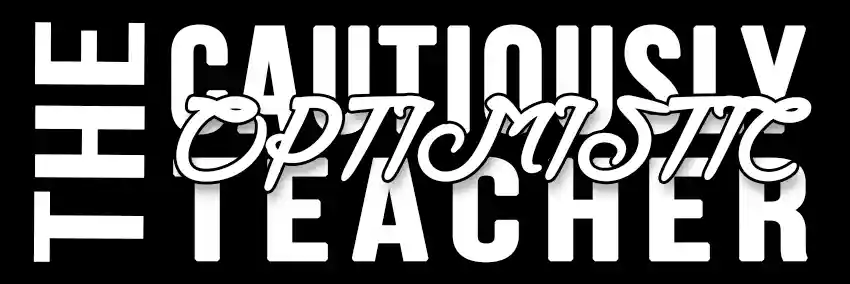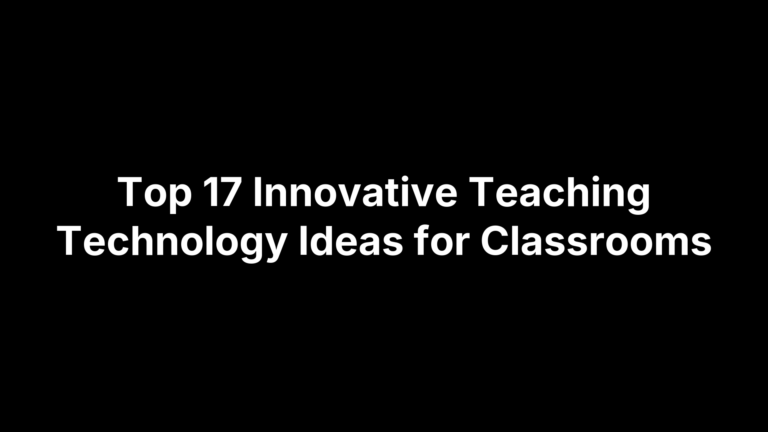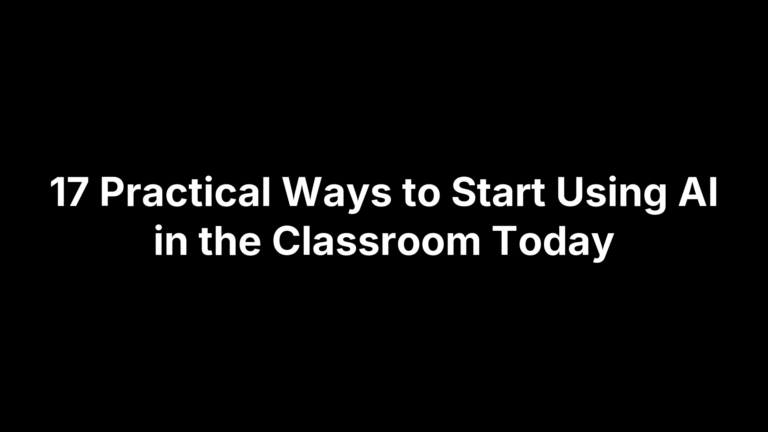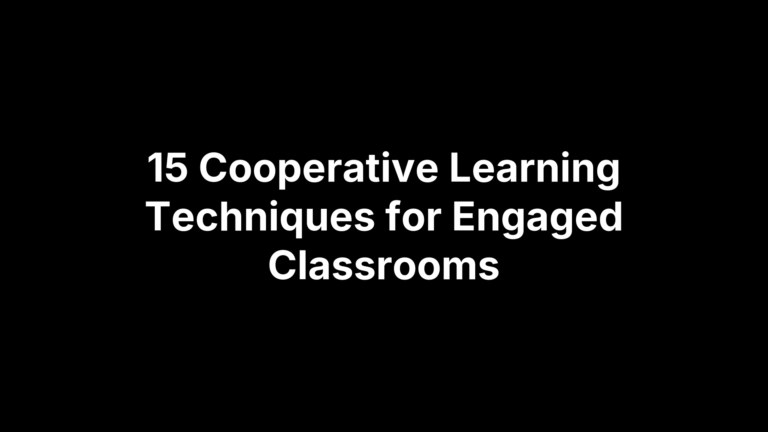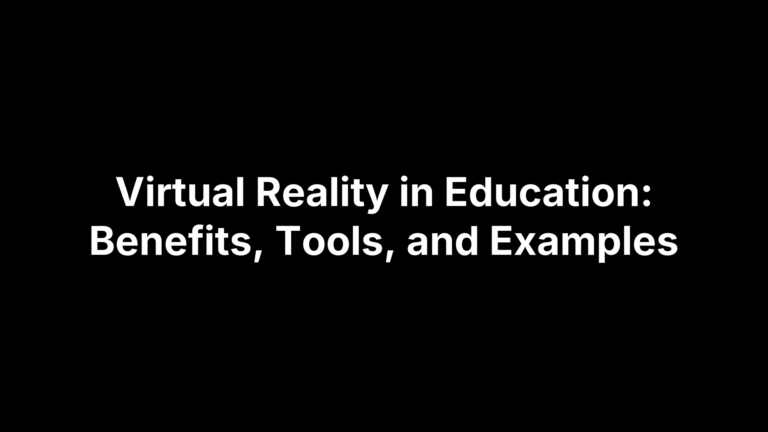Curriculum Design Theory: A Practical Guide for Teachers
Curriculum design theory is the research-backed playbook that shows teachers not just what to teach, but why, when, and how to teach it—along with reliable ways to judge whether learning actually stuck. By translating big-picture educational values into daily lesson choices, a solid theory shortens planning time, raises achievement, and keeps equity from slipping through the cracks.
This article turns the sometimes abstract topic into a practical guide you can use next period. You’ll get clear definitions that separate theory from design and development, a tour of the major principles and models, step-by-step instructions for mapping a coherent course, and a troubleshooting section for common missteps. Quick, SEO-friendly answers to trending questions round things out, and a takeaway checklist ensures the ideas travel with you beyond the screen.
Curriculum Theory, Curriculum Design, and Curriculum Development: Clearing Up the Terminology
Talk to five educators and you’ll likely hear these three phrases tossed around as if they were synonyms. That overlap makes sense—each deals with shaping learning—but lumping them together muddies planning conversations and hides where breakdowns occur. Before we jump into models and workflows, let’s pin down what each term actually covers and how they link in a living curriculum cycle.
Definitions and Scope
- Curriculum theory – the “why.” Scholars investigate value systems, cultural forces, and epistemology to explain what counts as worthwhile knowledge and how schooling should serve society.
- Curriculum design – the “blueprint.” Here, educators translate theories into concrete aims, choose content, decide sequencing, and align assessments. Think of it as drafting architectural plans.
- Curriculum development – the “build and refine” phase. Teachers write lessons, craft resources, trial assessments, gather data, and tweak. It’s where plans meet real students and iterations happen.
How the Concepts Interact in Practice
Picture a loop rather than a straight line:theory → design → development → implementation → evaluation → back to theory.
For example, adopting a social-constructivist stance (Vygotsky) pushes a problem-based design. That design is then developed into collaborative projects, piloted, and evaluated. Findings feed fresh questions for the theorists and new tweaks for designers.
Why These Distinctions Matter for Teachers
- Sharper alignment with district improvement plans and accreditation rubrics—administrators speak “design,” state auditors review “development.”
- Clear communication with parents and students: “We designed this unit for critical thinking” is more transparent than “the curriculum says so.”
- Focused reflection during PLC meetings. If scores dip, ask first, “Is the issue theoretical (misaligned values), design-related (poor sequencing), or developmental (weak materials)?” That precision speeds problem-solving and keeps curriculum design theory actionable rather than abstract.
Foundational Principles Guiding Modern Curriculum Design
Great models come and go, but several bedrock ideas keep showing up no matter which curriculum design theory you favor. Treat these as the non-negotiables that anchor every syllabus, unit map, or daily lesson you create.
The 7 Principles of Curriculum Design
Good curricula are:
- Challenge & enjoyment – students debate Snapchat’s data policy, not just memorize privacy terms.
- Breadth – literature circles include global authors alongside Shakespeare.
- Progression – each lab builds on the last by adding a new variable to control.
- Depth – a Socratic seminar digs into one chapter for 40 minutes.
- Personalisation & choice – reading menus let eighth-graders pick dystopian or historical fiction.
- Coherence – vocabulary lists match the reading and the writing tasks.
- Relevance – budgeting projects use current grocery prices.
Alignment With Learning Outcomes (Backward Alignment)
Constructive alignment means every activity and assessment proves the stated objective—not the teacher’s hunch. Draft outcomes first, then fill in the rest:
| Objective (Bloom verb) | Learning Activity | Assessment Evidence |
|---|---|---|
| Analyze how imagery conveys mood in poetry | Color-coding figurative language during close reading | Paragraph using text evidence, scored with rubric |
| Design a simple budget meeting given constraints | Spreadsheet simulation in pairs | Oral defense + balanced sheet |
If a cell feels forced, revise until the row flows.
Inclusion, Equity, and Universal Design for Learning (UDL)
UDL urges us to engage multiple brain networks—engagement, representation, action/expression—so all learners can hit the same bar. Quick checklist:
- Offer texts in audio, large-print, and native-language glossaries.
- Provide scaffolded sentence starters and open-ended prompts.
- Let students show mastery through podcasts, infographics, or essays.
- Build in “expert” modeling videos for students who need repetition.
Continuous Assessment and Feedback Loops
Formative data drive micro-adjustments long before the unit test. Pair a two-question exit ticket with a weekly reflection journal; chart results on a simple data wall. Summative scores, student voice surveys, and common-assessment meetings feed a mini Plan-Do-Study-Act cycle so the curriculum never calcifies. In short, assess early, often, and transparently—and let the findings push the next iteration of your curriculum design theory into action.
Four Overarching Theories That Shape Curriculum Thinking
Before you choose a model or start mapping units, it helps to know the big belief systems humming in the background. Each theory answers a different “What is school for?” question and, in turn, steers curriculum design theory decisions about content, pedagogy, and assessment. Most schools mix and match, but spotting the dominant lens clarifies why certain choices feel “right” or “wrong.”
Structure-Oriented Theories
These theories view curriculum as an engineered system with clearly defined parts. Ralph Tyler’s four-question rationale—objectives, experiences, organization, evaluation—remains the poster child.
- Pros: crystal-clear goals, easy progress monitoring, policy alignment.
- Cons: can freeze creativity and ignore emergent learner interests.
Value-Oriented Theories
Here, moral and civic outcomes trump test scores. Whether through character education or service-learning, units are judged by the kind of people they help students become.
- Classroom snapshot: a humanities course that pairs readings on social justice with weekly volunteer work, capped by a reflective portfolio.
- Watch-out: values vary; community buy-in is critical.
Content-Oriented Theories
Rooted in the liberal-arts tradition, these theories insist that mastering disciplinary knowledge builds intellectual muscle. E.D. Hirsch’s Core Knowledge sequence is a modern example.
- Strengths: depth, cultural literacy, straightforward sequencing.
- Critiques: risks privileging dominant cultures and sidelining contemporary skills unless curated with care.
Process-Oriented Theories
Influenced by Dewey and Vygotsky, process theorists argue that how students learn eclipses what they learn. Inquiry, collaboration, and reflection drive the syllabus; knowledge emerges through doing.
- Example: a STEM program built around design thinking cycles—empathize, ideate, prototype, test.
- Challenge: messy assessments; pacing guides stretch when student investigations run long.
Knowing which theory sits in the driver’s seat lets you anticipate tensions and craft a more coherent, purpose-aligned curriculum.
Three Core Models of Curriculum Design and When to Use Each
A single “best” plan does not exist. Instead, teachers choose among three time-tested models—subject-, learner-, and problem-centered—then tailor the details with their chosen curriculum design theory. Understanding the trade-offs up front prevents mid-semester rewrites and helps PLC teams speak a common design language.
| Model | Primary Focus | Strengths | Challenges | Best Contexts |
|---|---|---|---|---|
| Subject-Centered | Disciplinary knowledge organized in logical sequences | Depth, teacher expertise, clean link to standards & exams | Siloed learning, limited interdisciplinarity | AP or IB courses, college-prep tracks |
| Learner-Centered | Student interests, readiness, and agency | High motivation, natural differentiation, SEL integration | Planning load, perceived lack of rigor | Elementary integrated studies, electives, advisory periods |
| Problem-Centered | Real-world issues framed as driving questions | Authentic transfer, collaboration, critical thinking | Resource-intensive, tricky assessment | STEM academies, capstone projects, service-learning units |
Subject-Centered Model
This classic layout treats each discipline like its own chapter in a textbook. Units flow from prerequisite concepts (e.g., algebraic expressions) toward advanced applications (quadratics). When test blueprints or licensing requirements dictate exact content, a subject-centered map ensures nothing slips through the cracks. To soften the silo effect, add “interludes” where students apply overlapping skills—like a statistics mini-project inside biology lab reports.
Learner-Centered Model
Here, students’ questions drive the itinerary. A 4th-grader’s fascination with space might spark a cross-curricular unit covering gravity (science), mythological constellations (ELA), and scale models (math). Because voice and choice rule, teachers front-load their year with interest surveys, flexible grouping plans, and menus of assessment options. Tight formative checks are essential so momentum doesn’t eclipse mastery.
Problem-Centered Model
Rooted in Dewey’s experiential philosophy, problem-centered curricula revolve around messy, authentic challenges: How can our town cut carbon emissions 30 % by 2030? Teams cycle through research, prototyping, and public pitches, gathering evidence of learning along the way. Rubrics must balance content accuracy with collaboration and innovation, and community partnerships often supply expert feedback. When schools need visible, portfolio-worthy outcomes—think magnet STEM programs—this model shines.
Classic Frameworks Every Educator Should Know
Models tell you what to organize; frameworks tell you how to organize it. The four classics below keep popping up in accreditation rubrics, curriculum design theory courses, and district PD because they’re simple, flexible, and field-tested. Pick one as your default “organizing algorithm,” then tweak details to fit your context.
Tyler’s Four Questions Framework
Ralph Tyler condensed planning into four relentless questions:
- What educational purposes should the school seek to attain?
- Which learning experiences best achieve those purposes?
- How can experiences be effectively organized?
- How will we know the purposes were attained?
Example (unit on climate change):
- Purpose → students analyze causes and propose mitigation strategies.
- Experiences → lab on CO₂ absorption, documentary debates, local data collection.
- Organization → inquiry cycle: explore, explain, act.
- Evidence → position paper scored with rubric + community presentation.
Taba’s Inductive Model
Hilda Taba flipped Tyler’s top-down flow: start small, then generalize upward through seven teacher-driven steps.
| Step | Teacher Action |
|---|---|
| 1 | Diagnose needs (survey, test data) |
| 2 | Formulate objectives (SMART verbs) |
| 3 | Select content (relevant + valid) |
| 4 | Organize content (simple → complex) |
| 5 | Select learning experiences (varied modalities) |
| 6 | Organize experiences (spiral or thematic) |
| 7 | Determine evaluation (formative + summative) |
Because teachers craft objectives after the diagnosis, this model excels when responding to newly identified gaps—say, reading stamina in Grade 8.
Wiggins & McTighe’s Backward Design (UbD)
UbD works backward from desired results through three stages:
| Stage | Key Task | Climate-Change GRASPS* Snapshot |
|---|---|---|
| 1 | Identify desired results | Goal: reduce school carbon footprint 20 % |
| 2 | Determine acceptable evidence | Role: sustainability consultant; Product: action plan |
| 3 | Plan learning experiences | Jigsaw readings, energy-audit lab, peer review |
*GRASPS = Goal, Role, Audience, Situation, Product, Standards—a handy template for performance tasks.
Spiraled Curriculum and Other Adaptations
Jerome Bruner argued that big ideas should recur at increasing complexity. In mathematics, students might meet y = mx + b in Grade 6 using tables, revisit it in Grade 7 with graphing technology, and, by Grade 9, rearrange it to model experimental data. Spiraling guards against “one-and-done” exposure and supports spaced retrieval, making it an ideal partner to any of the frameworks above.
A Practical Workflow for Designing or Redesigning a Curriculum
Knowing the theories is half the battle; getting a workable curriculum onto your Google Drive (and into students’ heads) is the other half. The four-step workflow below translates curriculum design theory into an organized routine you can reuse for a single unit or an entire program.
Conducting a Needs Analysis and Defining Clear Outcomes
Start by asking, “What do my learners actually need next?”
- Stakeholder interviews – talk to students, parents, and next-grade teachers to surface pain points.
- Gap analysis – compare recent assessment data to required standards to identify missing skills.
- Standards review – highlight verbs and content strands that recur; these become non-negotiables.
Turn findings into SMART objectives (Specific, Measurable, Achievable, Relevant, Time-bound).
Example: By the end of Week 4, students will evaluate (Bloom’s level 5) three renewable-energy solutions and justify their preferred option in a 400-word position paper scoring at least 3/4 on the argument rubric.
Mapping Content, Skills, and Assessment for Coherence
Think of this stage as building a GPS route from objectives to evidence.
- Create a curriculum map – a spreadsheet or mapping tool with rows for weeks and columns for content, skills, activities, and assessments.
- Check vertical alignment – do earlier grade outcomes ladder smoothly toward later ones?
- Check horizontal alignment – within the same grade, are ELA, science, and social studies reinforcing similar literacies?
- Insert assessment touchpoints – mini-quizzes, performance tasks, and reflection prompts spaced for timely feedback.
A quick self-test: if you hide the “activities” column, can a colleague still predict which assessment fits each objective? If not, tighten the links.
Designing Engaging Learning Experiences
With the skeleton built, flesh it out with methods that spark curiosity:
- Project-Based Learning (PBL) – students design a school garden to model ecosystems.
- Inquiry cycles (question, investigate, create, discuss, reflect) – perfect for lab science or history mysteries.
- Station rotation – blend direct instruction, digital practice, and peer tutoring in a single period.
Add a storytelling hook (“You are the city’s chief engineer…”) and an authentic audience (town council, class podcast listeners) to raise the stakes.
Iterative Evaluation and Revision Cycle
Treat implementation as version 1.0, not the final draft.
- Collect data – unit tests, rubric scores, student work samples, and quick mood surveys.
- Run a PDSA mini-cycle:
Plan– identify one element to tweak (e.g., unclear rubric criteria).Do– apply the tweak in the next class or section.Study– compare new evidence to the old.Act– institutionalize the improvement or try a different fix.
Log adjustments in a shared doc so future you—or your PLC teammate—starts the next redesign from a higher baseline rather than reinventing the wheel.
By looping through these four stages, you’ll keep curriculum design theory alive, responsive, and laser-focused on real learner growth.
Typical Mistakes Teachers Make and How to Fix Them
Even the strongest curriculum design theory can unravel in day-to-day practice. Most derailments fall into four predictable traps. Spot them early, apply the quick fixes below, and you’ll save yourself marathon re-writes—and students hours of confusion.
Misalignment Between Objectives, Activities, and Assessment
- Symptom: “I taught it but they didn’t learn it.” Tests include analysis while lessons stopped at recall.
- Remedy: Reverse-engineer each lesson. Write the assessment prompt first, underline the Bloom’s verb, then choose activities that rehearse that exact cognitive move. Use a color-coding check—green for perfectly aligned, yellow for partial, red for off-target—to make gaps impossible to ignore.
Overcrowded or Shallow Curriculum
- Symptom: Syllabus reads like a Netflix menu; units sprint from topic to topic with little retention.
- Remedy: Run a prioritization matrix:
- Must know (tested standards, safety skills)
- Should know (reinforcing concepts)
- Nice to know (enrichment)
Slash or merge anything below the “should” line and allocate saved time to deeper inquiry or guided practice.
Neglecting Diverse Learner Needs and Accessibility
- Symptom: One-size-fits-all worksheets leave ELLs and students with IEPs guessing.
- Remedy: Apply three UDL checkpoints to every resource—multiple means of engagement, representation, and expression. Create tiered tasks with low-floor/high-ceiling entry points, and offer choice boards so learners can demonstrate mastery through text, audio, or visuals.
Failing to Plan for Ongoing Improvement
- Symptom: Units look identical year after year despite new data.
- Remedy: Schedule a yearly curriculum audit. Pair up with a colleague, pull last term’s student work, and complete a one-page PDSA reflection. Archive tweaks in a shared drive folder so next year’s planning starts at version 2.0, not 0.5.
Quick Answers to Popular Curriculum Design Questions
Need the gist in seconds? Copy-paste these micro-summaries into your planning notes.
What are the 4 types of curriculum design?
Subject, learner, problem, integrated—choose them for depth, motivation, real-world transfer, or interdisciplinary coherence.
What are the 4 theories of curriculum?
Remember “SVCP”: structure, value, content, process—guiding how we organize learning, instill ethics, prioritize knowledge, and shape experiences.
What are the 7 principles of curriculum design?
Challenge, breadth, progression, depth, personalization, coherence, relevance—e.g., choice boards deliver personalization, while spiraled units secure progression.
What are the 3 models of curriculum design?
Subject, learner, and problem centered—see the comparison table above for their strengths, pitfalls, and best-fit contexts.
Key Takeaways
- Curriculum design theory turns lofty educational values into concrete, assessable learning routes for students—and saves teachers hours of guesswork.
- Anchor every plan in the seven principles plus backward alignment and UDL; they guarantee rigor, relevance, and access for all learners.
- Pick your structural backbone wisely: subject-, learner-, or problem-centered, then steer it with a framework such as Tyler, Taba, or UbD.
- Work the four-step loop—needs analysis, coherent mapping, engaging experiences, mini PDSA reviews—to keep curriculum living, data-driven, and iteration-ready.
- Head off predictable pitfalls by cross-checking Bloom’s verbs, trimming overload, applying UDL checkpoints, and scheduling a yearly peer audit.
For free templates and AI tools that make each step faster, swing by The Cautiously Optimistic Teacher.
